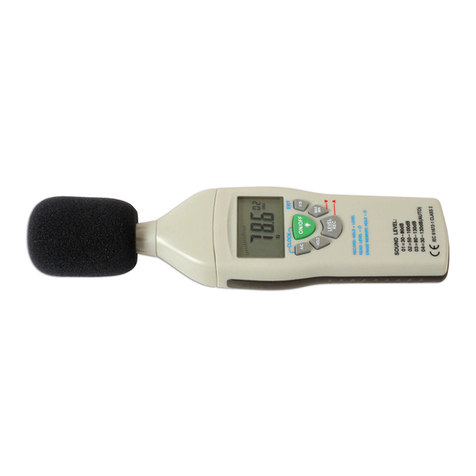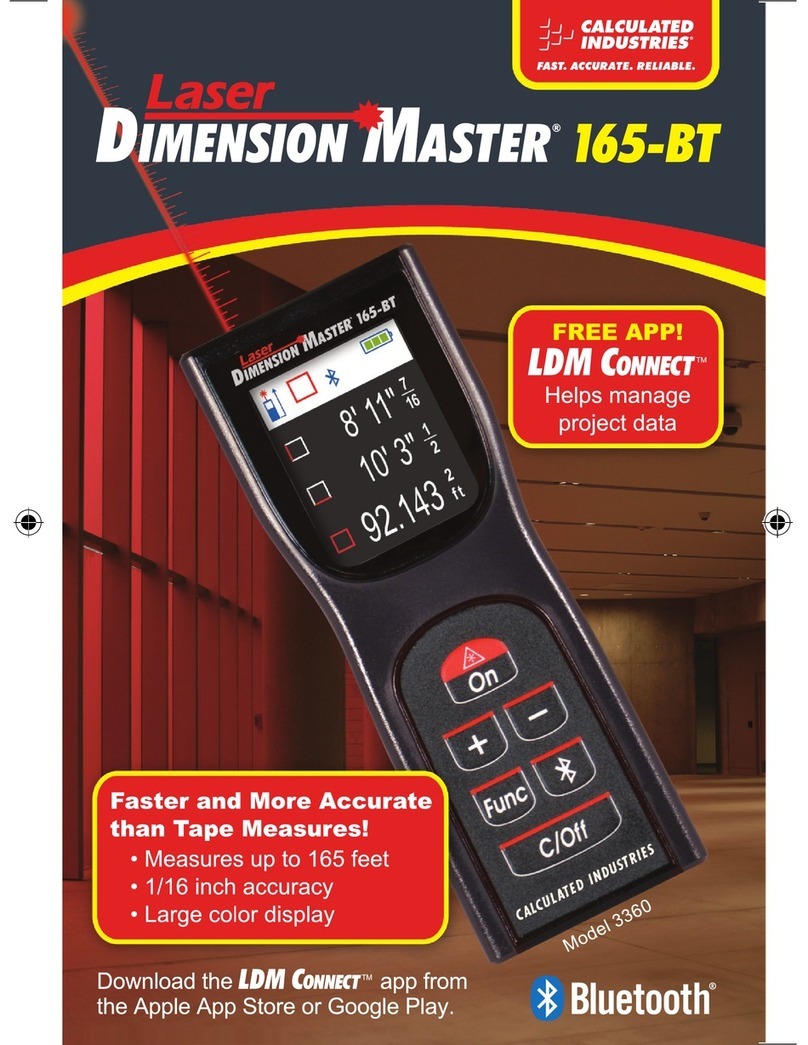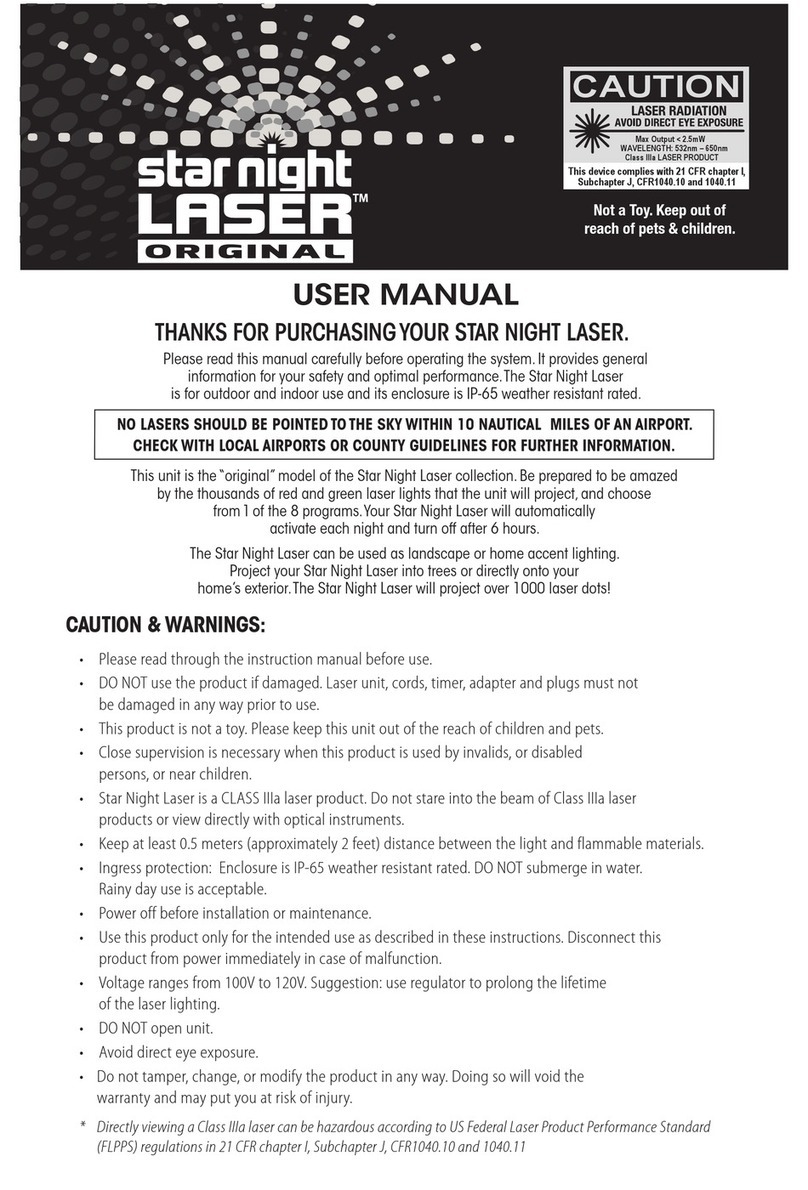LASER TOOLS Cam Belt Tensioner Gauge
10
This will not prevent use of the instrument, but calibration
should be carried out as soon as possible.
FAILURE TO RE-CALIBRATE THE UNIT WHEN
REQUIRED WILL RESULT IN INCORRECT VALUES
BEING DISPLAYED. THIS WILL RESULT IN INCORRECT
TENSION BEING APPLIED TO A BELT, AND THE BELT
COULD SUBSEQUENTLY FAIL. THE CONSEQUENCE OF
WHICH COULD BE EXTENSIVE ENGINE DAMAGE.
Calibration should only be carried out by a service centre
equipped with the appropriate calibration equipment.
An invalid or failed calibration attempt will result in the
instrument defaulting to ‘failsafe’ mode, where the only
options available to the user are to switch off or re-calibrate
the unit. If the ‘CALIBRATION’ option is inadvertently
selected, the message ‘ARE YOU SURE?’ will be displayed.
Press the ‘Menu’ key to abort the calibration procedure.
If no key is pressed for approximately 30 minutes, the
instrument will switch itself off to save the battery. The unit
can also be switched off at any time by holding down the ‘0’
key until the display disappears.
If the battery needs changing, the red LED will flash and the
display will show the message ‘LOW BATTERY!’
Note: If the battery is completely drained, the instrument
will not operate at all.
The tension gauge requires no maintenance, other than the
unit should be periodically wiped over with a clean cloth.
The keypad is a sealed membrane type, which can easily be
cleaned without damage. Do not clean with solvents.
The Tension Gauge is warranted against defects in material
and workmanship under normal use and service for the period
of one year from the original date of purchase.
Should the instrument become inoperative a repair will be
carried out free of charge to the original purchaser within a
one year period from the original date of purchase.
The warranty shall not apply and will be void if, in the opinion
of the manufacturer, the tension gauge or any of its
components have been damaged or subjected to misuse.
The tension gauge should be calibrated as described in this
manual. The manufacturer reserves the right to refuse any
warranty claim if it is a result of not complying with the
calibration procedures.
Complete and return enclosed registration card.
Calibration procedure
Auto power off
Low battery warning
Maintenance
Warranty procedures































